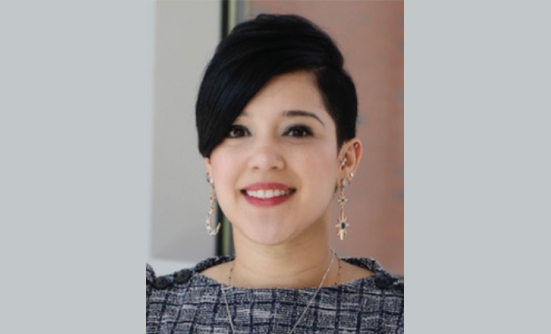Skin cancer is the most common cancer in the United States,1,2 with up to 5 million new people diagnosed each year.2 This number encompasses the 3 most common forms of skin cancer, including melanoma, basal-cell carcinoma, and squamous-cell carcinoma.
Although many people are familiar with melanoma—an aggressive form of skin cancer—the most common skin cancer type is basal-cell carcinoma, accounting for most (80%) of all skin cancers. Melanoma often presents as a dark lesion, but basal-cell carcinoma may have a more subtle appearance, often causing people to mistakenly assume it is insignificant.
Like many cancers, if detected early, basal-cell carcinoma has several treatment options, and, except in the rarest cases, does not lead to death. Similarly, melanoma that is detected early, before it is spread to other areas of the body, can be treated and healed, with a survival rate of 98%. However, metastatic (spreading) melanoma that is not treated can be fatal.
As a board-certified dermatologist, I cannot stress enough how important it is to monitor your skin changes regularly. And now, with new skin-tracking technologies, including specially designed apps, this process is becoming more intuitive.
How Skin Cancer Develops
Skin cancer is an abnormal growth of damaged skin cells that most often develops on skin that is exposed to ultraviolet radiation through extensive sun exposure or the use of UV tanning beds. However, UV light is not the only risk factor for skin cancer, and the effect may be indirect.
Research shows that the risk of skin cancer is higher in individuals with fair skin and fair hair, light color eyes, and a family history of skin cancer.3 In addition, a weakened immune system can also increase the risk of skin cancer.
Diagnosis
The most common sign of skin cancer is a new lesion that may resemble a mole, a freckle, or a beauty spot. As a dermatologist, I try to empower my patients to become familiar with their skin, and encourage them to check it regularly, because in reality, individuals are the first people to notice more than half (50%) of all new skin cancers.
The goal is for people to identify any changes in their skin appearance, not to engage in self-diagnosis. Any concerns or changes you notice should be brought to a dermatologist for consultation. Because early-stage skin cancer is typically treatable, with minor surgery under local anesthetic, it is crucial for people to be on the lookout for any skin changes that may indicate skin cancer.
Conduct Regular Skin Checks
Visits to a dermatologist are essential, but they only represent one aspect of a proper approach to skin surveillance. People should conduct regular self-checks at home to monitor for skin changes, which will increase the likelihood of early detection of skin cancer.
Look for these features during skin self-examination:
- A pale patch of skin or a pearly or waxy bump (basal-cell carcinoma)
- A bleeding or scabbing sore that heals and then returns (basal-cell carcinoma)
- A firm, red nodule, or lump on the skin (squamous-cell carcinoma)
- A flat lesion with a scaly, crusted surface (squamous-cell carcinoma)
- A mole that changes in color, size, or feel, or that bleeds (melanoma)
The key is to watch for abnormalities, atypical marks, and overall changes to your skin.
Skin-Tracking Tools
Skin evolves naturally, so it can be challenging to keep track of skin changes over time.
Throughout the COVID-19 pandemic, skin cancer screenings initially dropped by more than 86%.4 This might have been related to people’s discomfort with in-person appointments. At times during which in-person visits are not practical, skin tracking apps are particularly valuable to patients.
The Miiskin app, with which I’m most familiar, is one example of a helpful tool that can track skin changes between dermatologist appointments, whether you have delayed your appointment, or you are maintaining your routine doctor visits.
The use of such apps allows you to take high-quality photos, which can then be easily shared with the doctor to check any concerning skin changes.
Today, several tools are available to make the process of keeping track of skin changes over time easier, and many of these tools are accessible on mobile devices.
A simple solution is using the camera on a smartphone. Along with many other dermatologists, I recommend using photography to track skin changes as an aid to self-examination. Broadly speaking, there are 2 types of photos people can take for skin surveillance, including (1) photos of individual moles and marks to monitor for changes, and (2) images of wider portions of the skin to identify global changes and new features.
Think of the latter as a bird’s-eye view of an area such as the back, where a person may have many marks. Identifying new marks on your back is challenging without the bigger picture. Using a specially designed app for skin care helps users capture both types, including the front and back torso and arms, and the front and back of the legs.
I recommend the Miiskin app to my patients, because it is intuitive to use, and it effectively encourages people to monitor their skin changes. However, there are other apps that you could use for the same purpose. The photos taken with the app can prompt appropriate medical intervention, which saves lives.
This specific app also includes a feature called Skin Mapping technology, which automatically identifies skin features to make it easier to spot suspicious conditions. Skin Mapping helps people monitor large areas of their skin, by using total body photography and highlighting all lesions. When a person takes the next set of photos, the app automatically highlights new or changing areas.
Prevention Methods
People can reduce the risk of skin cancer by being vigilant about their skin safety while spending time outdoors, regularly checking for skin changes, and scheduling routine appointments with a dermatologist.
Avoiding direct sunlight, wearing protective clothing, and using sunscreen with an SPF of 30 or higher further reduces the risk of skin cancer. If you have to be outside for extended periods, you should seek shade when possible, and be mindful of surfaces that reflect the sun’s rays, such as water, snow, sand, and concrete.
Finally, people who have used a tanning bed in the past should be extra vigilant and regularly check their skin.
References
- Melanoma of the Skin Statistics. Centers for Disease Control and Prevention. www.cdc.gov/cancer/skin/statistics/index.htm.
- American Cancer Society. Cancer Facts and Figures 2020. www.cancer.org/content/dam/cancer-org/research/cancer-facts-and-statistics/annual-cancer-facts-and-figures/2020/cancer-facts-and-figures-2020.pdf.
- Mayo Clinic. Melanoma. www.mayoclinic.org/diseases-conditions/melanoma/symptoms-causes/syc-20374884. March 10, 2020.
- Duran S. Appointments for skin cancer screenings drop during coronavirus pandemic. Spectrum News 1. June 15, 2020. https://spectrumlocalnews.com/nc/triad/news/2020/06/13/appointments-for-skin-cancer-screenings-drop-during-coronavirus-pandemic.
Key Points
- Skin cancer is the most common cancer is the United States, with up to 5 million people diagnosed each year
- The 3 most common forms of skin cancer are melanoma, basal-cell carcinoma, and squamous-cell carcinoma; about 80% of all cases are basal-cell carcinoma
- The risk of skin cancer is higher in individuals with fair skin and fair hair, light color eyes, and a family history of skin cancer
- Avoiding direct sunlight, wearing protective clothing, and using sunscreen with SPF 30 or higher reduces the risk of skin cancer
- Today, several tools are available to make the process of keeping track of skin changes over time easier, and many of these tools are accessible on mobile devices















